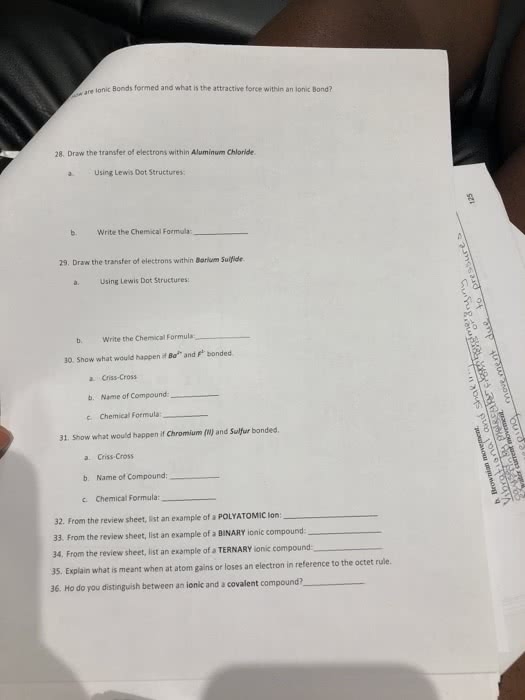CHEM120 Lecture Notes - Lithium Nitride, Potassium Carbonate, Magnesium Bromide
Document Summary
Covalent bonds, which involve a sharing of electrons between atoms, give rise to molecular compounds. Ionic bonds, which involve a transfer of electrons from one atom to another, give rise to ionic compounds. An empirical formula is the simplest formula for a compound. The subscripts in an empirical formula are reduced to their simplest whole-number ratio. A molecular formula is based on an actual molecule of a compound. A structural formula shows the order in which atoms are bonded together in a molecule and by what types of bonds. A condensed structural formula is written on a single line. Organic compounds are made up principally of carbon and hydrogen, with oxygen and/or nitrogen as important constituents in many of them. Chemical combination of a metal and a non-metal usually results in an ionic compound. An ionic compound is made up of positive and negative ions joined together by electrostatic forces of attraction.



